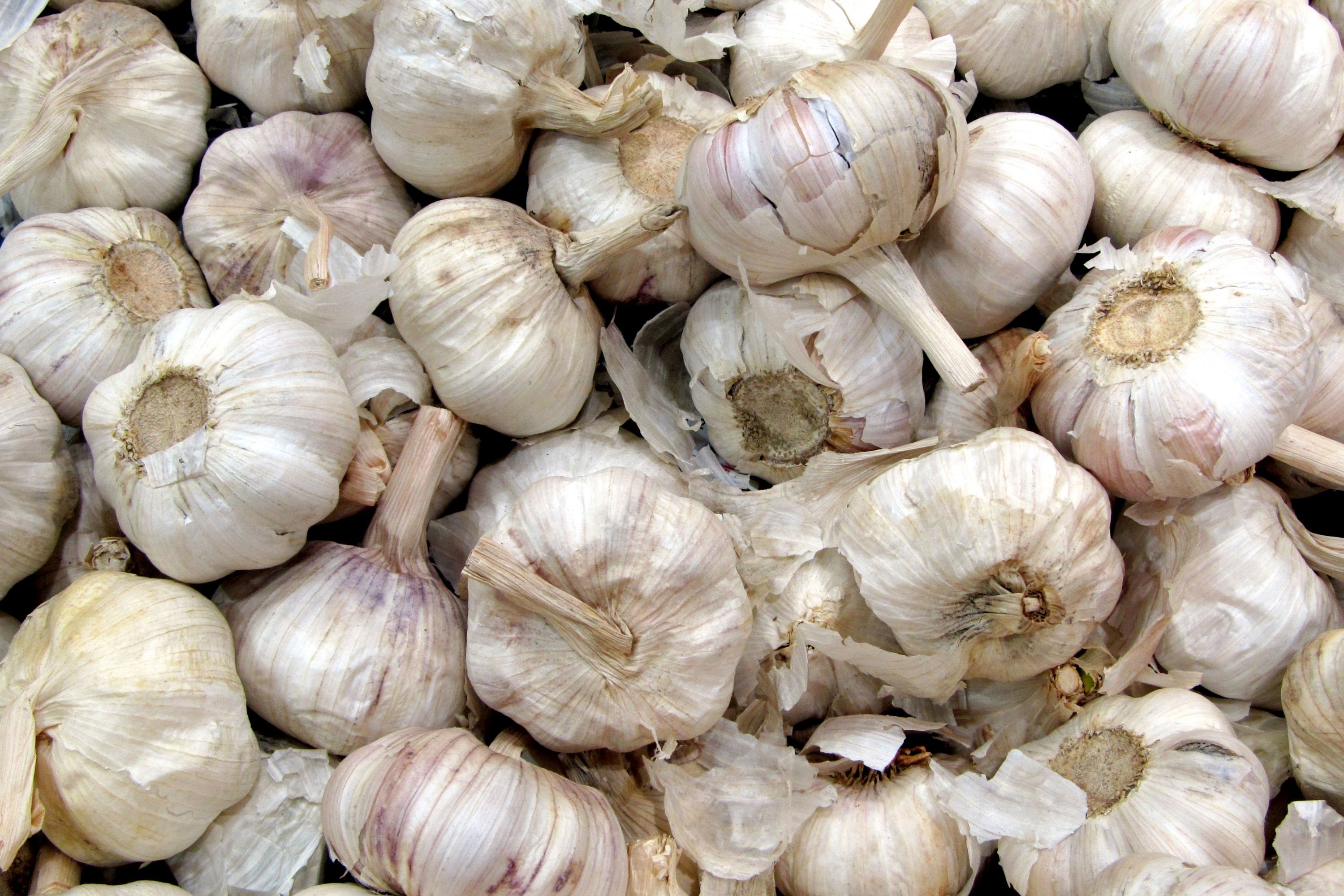Garlic
(Allium sativum)

Description
Allium sativum, commonly known as garlic, is a species of flowering plant in the family Amaryllidaceae. It is a perennial herb that is widely cultivated for its edible bulbs, which are used in cooking and as a traditional medicine for various ailments. Garlic is believed to have originated in Central Asia and has been cultivated for thousands of years. In this article, we will explore the history, cultivation, nutritional and medicinal properties, and culinary uses of Allium sativum. History The use of garlic can be traced back to ancient times. The Egyptians, Greeks, and Romans all used garlic for medicinal purposes. It was also used as a food flavoring agent and was considered a symbol of strength and protection. In the Middle Ages, garlic was believed to have the power to ward off evil spirits, and it was often used to protect against vampires. Cultivation Allium sativum is a hardy plant that grows best in cool climates with mild winters and long, warm summers. It prefers well-drained soil with a pH of 6.0-7.5 and requires full sun exposure. Garlic is typically propagated by planting individual cloves, which are separated from the bulb and planted in the soil. The cloves should be planted about 1-2 inches deep, with the pointed end facing up, and spaced about 6 inches apart. Garlic requires regular watering and should be fertilized with nitrogen-rich fertilizer. Garlic is typically harvested in the summer, when the leaves have turned yellow and begin to wither. The bulbs are dug up and allowed to dry in a cool, dry place for several weeks. Once the bulbs are dry, they can be stored in a cool, dark place for several months. Nutritional and Medicinal Properties Garlic is a rich source of vitamins and minerals, including vitamin C, vitamin B6, manganese, selenium, and calcium. It also contains a variety of sulfur compounds, including allicin, which is responsible for its characteristic smell and taste. These sulfur compounds are believed to have various health benefits, including: Lowering blood pressure: Garlic has been shown to lower blood pressure in people with hypertension. Reducing cholesterol levels: Garlic has been shown to reduce total cholesterol levels and LDL (bad) cholesterol levels. Boosting the immune system: Garlic has been shown to stimulate the immune system and may help prevent the common cold. Anti-inflammatory effects: Garlic has anti-inflammatory effects that may help reduce inflammation in the body. Anti-cancer properties: Some studies suggest that garlic may have anti-cancer properties and may help prevent certain types of cancer, such as stomach and colorectal cancer. Culinary Uses Garlic is a staple ingredient in many cuisines around the world. It is used to add flavor to a variety of dishes, including soups, stews, sauces, and marinades. Garlic can be used fresh, dried, or roasted, and it can be added to dishes whole, chopped, or minced. Garlic is also a key ingredient in many traditional dishes, such as garlic bread, aioli, and tzatziki. It is also used to flavor meats, seafood, and vegetables, and is often used in Mediterranean and Asian cuisines. In conclusion, Allium sativum, or garlic, is a versatile plant that has been used for thousands of years for its nutritional and medicinal properties. Garlic is easy to cultivate and can be used in a variety of dishes to add flavor and depth. Whether you are a fan of garlic or not, there is no denying that this humble herb has had a significant impact on our history, culture, and cuisine.
Taxonomic tree:







